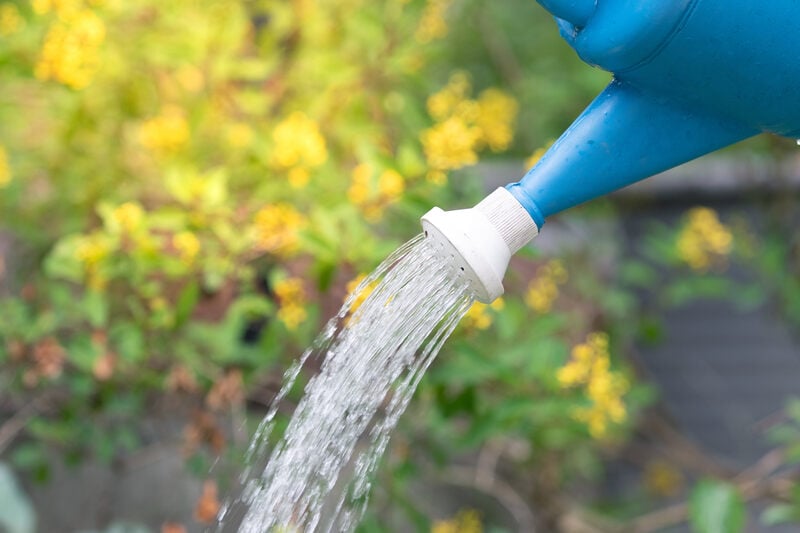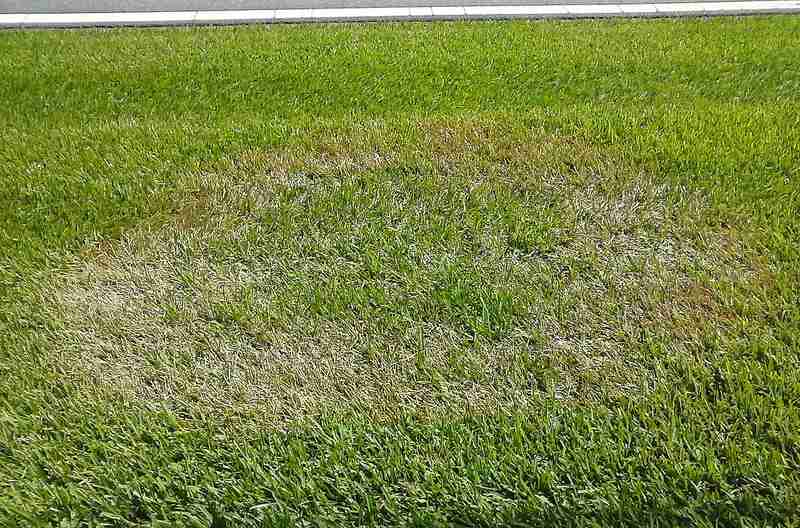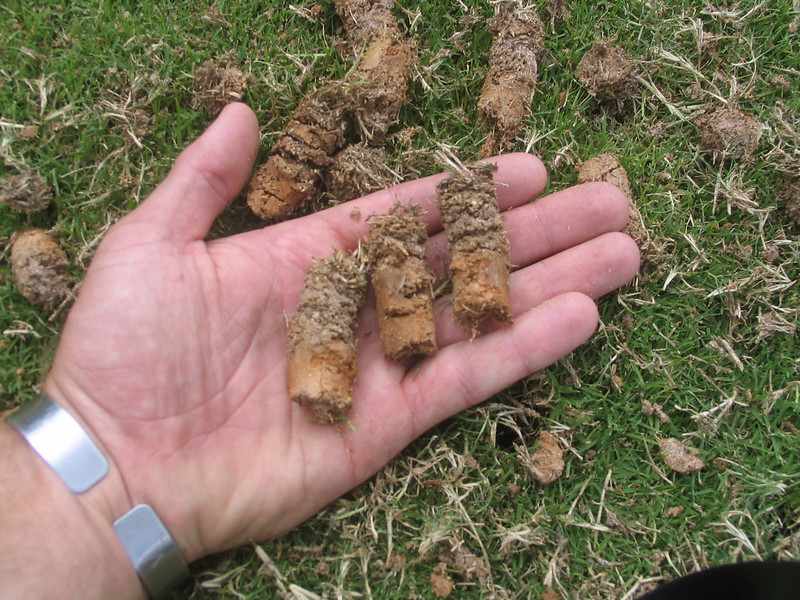
In the fall, your lawn continues to grow and look great — if you maintain it. As the weather begins to cool here in Oklahoma City, you’ll need to follow a few steps so it can handle weekend bonfires and football parties.
Here are fall lawn care tips for Oklahoma City…
Water Your Lawn as Needed

As temperatures drop, you may not need to water as frequently, but don’t stop totally. Keep watering your lawn regularly until it goes dormant for the winter.
Note: Some grass types will need more watering (and more regular watering) than others. See our Best Grass Types for Oklahoma City to learn more about how much to water your grass.
See Related:
— How to Water Your Grass in Fall and Winter
Remove Leaves
Rake up fallen leaves, use a leaf blower, or hire a leaf removal service (LawnStarter crews remove leaves as well as mow grass).
Here’s why you need to remove those leaves: Leaves, if left on the ground, can block water, sun, and nutrients from reaching the grass, and eventually decompose into thatch—and excessive thatch is not good for your lawn.
Leaf Removal Tips: You can rake up the leaves into a tarp or burlap square for easy cleanup when you’re done. You can also rake the leaves and add them to your compost bin to be composted into soil or mulch for the spring planting season.
See Related:
— 5 Ways to Clean Up Leaves From Your Yard
— How to Rake Leaves (a Step-by-Step Guide)
— How to Use a Leaf Blower Like a Pro
— How to Remove Leaves From Mulch and Flower Beds
— Is it Better to Rake or Mulch Leaves?
Treat Lawn Care Diseases

Photo Credit: Scot Nelson / Wikimedia Commons / CC0 1.0
You may see some late season lawn diseases, so if you start to notice weirdly shaped brown patches, you should look into diseases or insects that might be causing the trouble.
Late fall is also a good time to prepare those cool-season grasses—as they emerge to defend themselves against diseases that may appear in early spring, such as spring dead spot.
Fertilize Your Lawn
If you have cool-season grass coming in, fertilize it toward the end of the fall. This will help it grow greener and stronger.
By giving it this fertilizer boost, you’re setting it up for a great season until you fertilize again in springtime (usually in March).
See Related:
— When to Fertilize Your Lawn
— How Often Should You Fertilize Your Lawn?
— How to Choose the Right Lawn Fertilizer
Aerate and Dethatch

All year long, fallen grass blades from mowing and other organic components have created a layer on top of the soil. To see the best results for your grasses, you should dethatch with a thatch rake to allow seed, water, and fertilizer to get all the way down to the roots.
Remember to aerate with either a plug or spike aerator.
See Related:
— When and How Often Should You Aerate Your Lawn?
— How to Aerate Your Lawn
— How to Aerate and Overseed Your Lawn
Water and Mow Grass as Needed
During fall, your grass is still growing, but its growth rate is slowing down. This means you’ll water a bit less.
Warm-season grasses grow slowly, so you may not need to mow as often. Always remember to follow the one-third rule when you mow.
Need help preparing your lawn? Visit our Oklahoma City lawn care page to get in touch with a professional! In addition to Oklahoma City, we provide lawn care services to other Oklahoma cities, including Tulsa.
Main Image Credit: MARELBU / Wikimedia Commons / CC BY 3.0